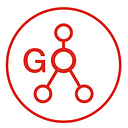Every few months, the GO team come together to focus on upgrades and problem solving for the platform. In early October 2021, for the first time since the pandemic began, we met with some of us in the same room. Being in-person again created a special energy, and it also helped to channel the contributions from colleagues from American RC, British RC, Netherlands RC, Ugandan RC, our GO developer team and IFRC staff from across the globe all participating in the week-long sprint.
Below is a short summary of the week with the slides containing links and more detail:
GO is gathering pace
The GO sprint felt momentous. We are starting to see a step change in the value add of the platform, not only in the evidence and data it channels, but also in the decisions and processes which it can underpin. We are aiming for GO to become the place where the IFRC network not only show and tell, but also do.
When it was launched three years ago, GO was innovative in the way it made previously buried data accessible in a simple, clean interface. As we have added more data streams (3w, PER, new types of Field Report, etc), these have been organised in loosely coupled modules, but we did not bring the data together within a single framework to help channel this unique evidence base to inform decision-making.
Managing increasing volumes and diversity of information
The number and diversity of data pipelines on the platform continues to increase. The GO risk module will massively increase the number of external data sources used on the platform. Most of these data will be impact based forecasts, curated from partners’ models. We will also re-launch the PER assessment form to allow our member National Societies to share their own preparedness self-assessment, notifying the IFRC network where there might be gaps or support needs. We also discussed ways to enhance the 3w so that it better fits the data model needed for emergencies, as well as extend its potential as a Movement mapping tool.
Integrated through a common analytical framework
The integration of all these data flows gain even greater value when combined with related information to form a holistic picture of an emergency, and used for resource allocation and operational decision-making. In order to identify signals amid the noise, the IFRC have developed an emergency needs assessment analytical framework, which underpins our understanding of crises. Through the combination of internal and external data, we use this framework to build up a comprehensive picture of needs, providing the evidence needed to identify an appropriate emergency response by our IFRC network, as local as possible, as international as necessary.
We intend to use the analytical framework more as a data model for GO, enabling us to better identify data and evidence to serve decisions.
With a little help from our friends
The GO week also provided a chance to catch up with some key partners to explore how their tools and approaches might be integrated into GO development roadmap.
Firstly, Simon Johnson, one of the original ‘GO-fathers’ and an IM expert with the British Red Cross, shared a potential HXL enabled approach to resolve some of the challenges of capturing 3w information in an emergency context. We have catalogued several issues with the GO 3w throughout the recent emergency operation in Haiti, which this innovative approach might help to solve.
Juan Duarte, Technical Director of MapAction then shared a compelling story of how the MapAction ‘data scramble’ is being optimised through the application of data science tools and techniques. The goal of the ‘Moonshot’ project is to automate the repetitive tasks carried out to create base maps and simple situation maps, allowing GIS experts to concentrate on more analytical tasks. Partly inspired by this, we aim to create a means for NS to host their geo-data on GO, as well as create simple maps to inform planning and analysis.
Finally, Hamish Patten, Postdoctoral Researcher in Computational Statistics at University of Oxford, shared stunning progress in the use of statistical analysis to estimate impacts of disasters and crises. The ODDRIN model will be one of those channelled through GO in the risk module, and we explored the potential to connect the model with observations and data captured by the IFRC network to improve predictive modelling and ultimately enable more anticipatory action.
If you have any questions, please get in touch with the team at IM@ifrc.org. The GO week was enabled through the financial support of the Australian Red Cross.
